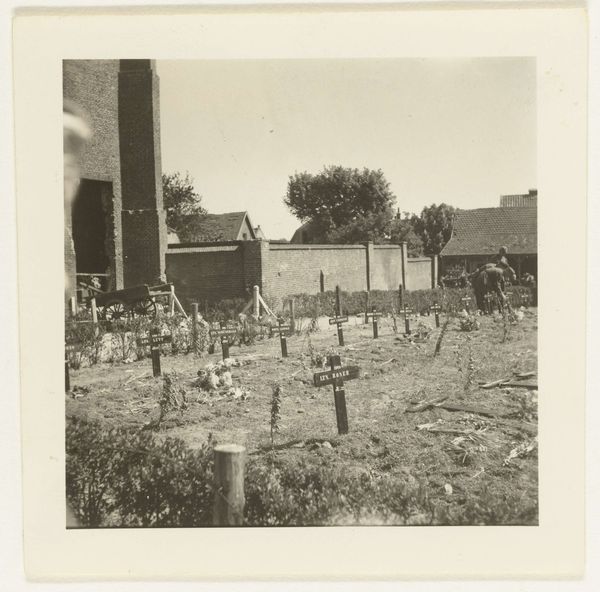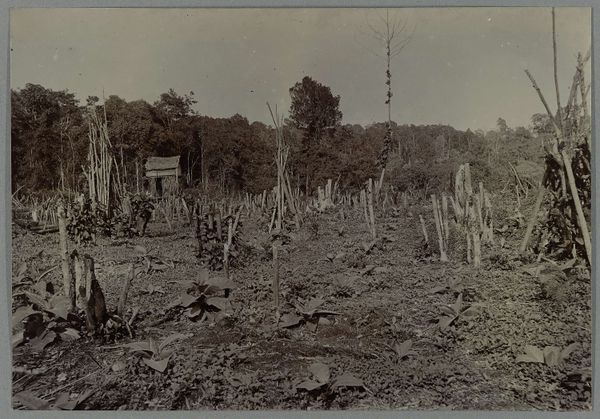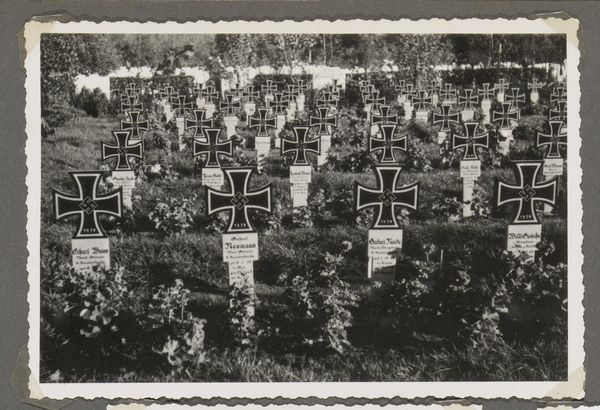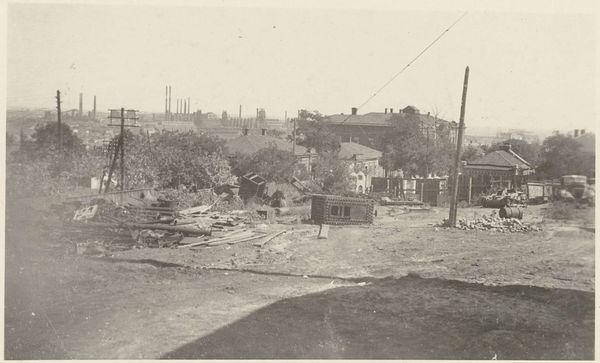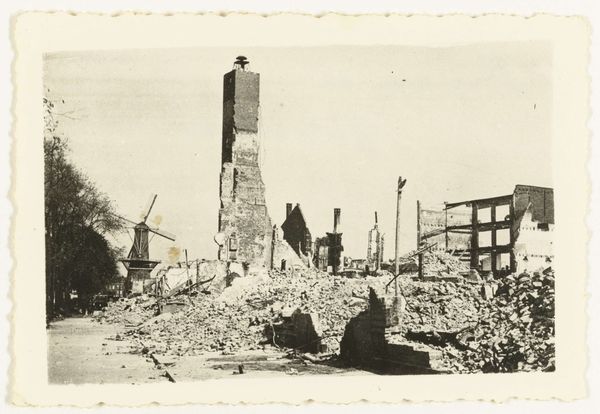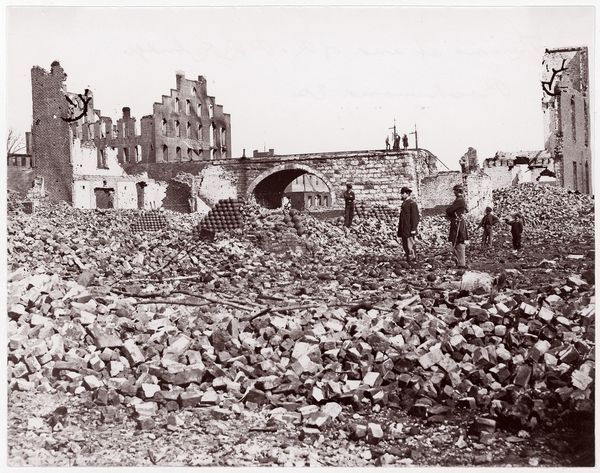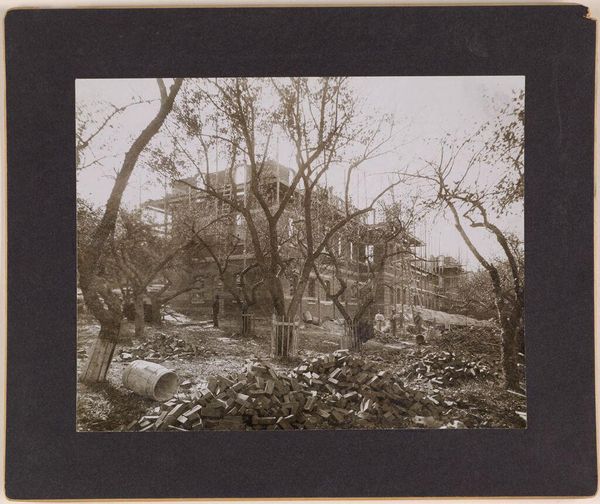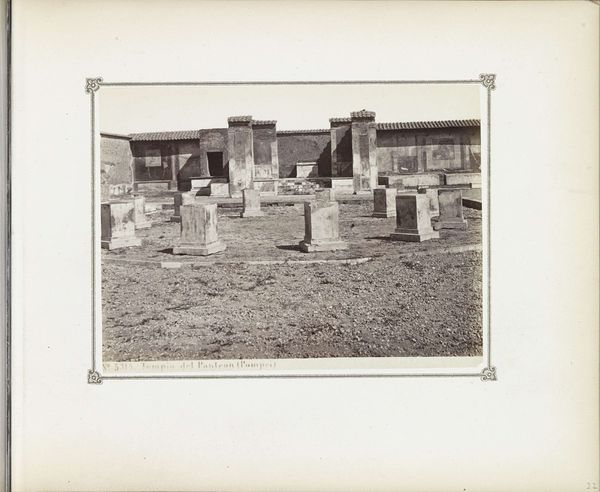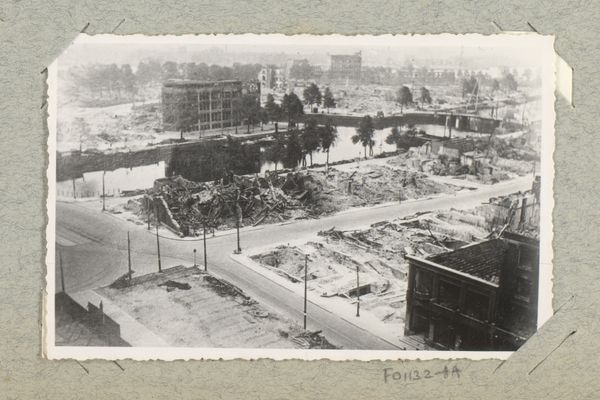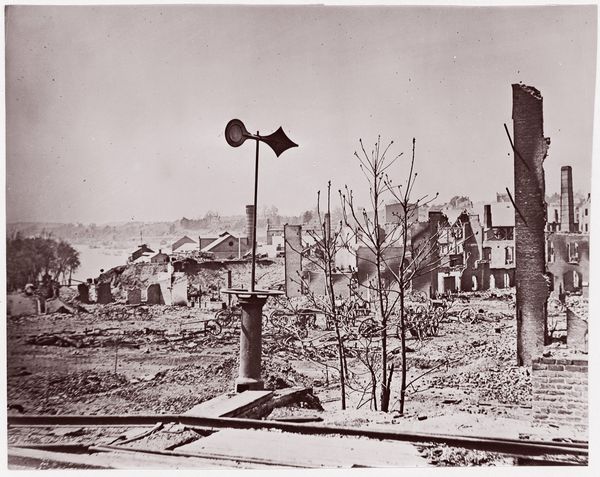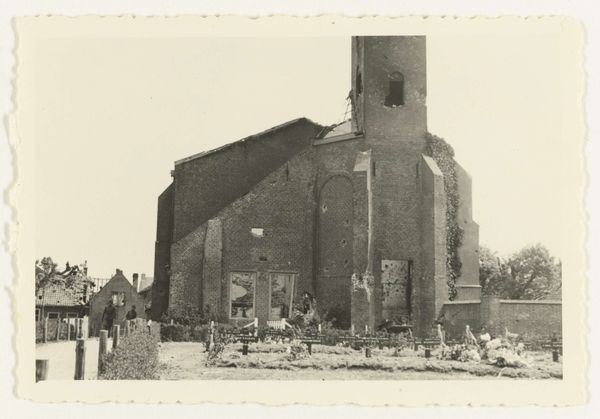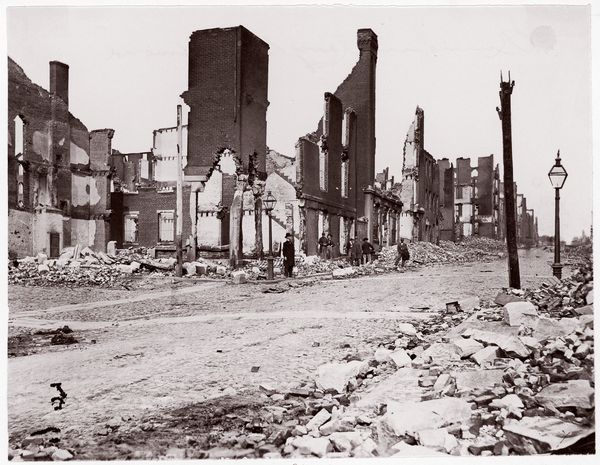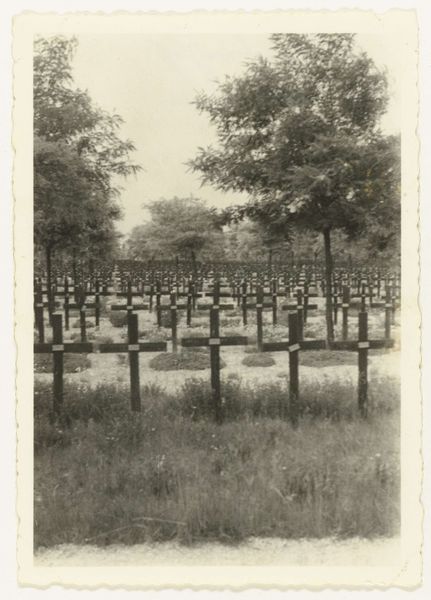
print, photography, gelatin-silver-print
#
print photography
# print
#
landscape
#
photography
#
gelatin-silver-print
#
history-painting
Dimensions: height 6.5 cm, width 9 cm
Copyright: Rijks Museum: Open Domain
Editor: Here we have an unsettling image titled *Begraafplaats Duitse militairen,* or German Military Cemetery, likely taken between 1940 and 1946. It’s a gelatin silver print. What strikes me is the stark contrast between the neat rows of crosses and the ruined building looming in the background. What do you see in this photograph? Curator: I see layers of symbolic weight embedded within this seemingly simple landscape. Notice how the crosses, symbols of both faith and remembrance, are rendered almost identical, a visual flattening that speaks to the homogenization of grief and loss on a massive scale. The ruined building is key, a visual disruption—almost a negation of domestic space. It silently acknowledges destruction, situates the individual graves in a broader theatre of ruin. Editor: So, the building reinforces the context of war. What about the choice of subject? Why photograph a German cemetery? Curator: Consider the time, the aftermath of conflict. To photograph this space then is an act of witnessing, but also of complex reckoning. These crosses were meant to disappear behind rhetoric, demonization. The photograph reclaims that denied humanity, or rather, documents its erasure through death. The gelatin silver print as medium suggests documentary truth, yet its starkness also conveys trauma and alienation. Look at how the crosses almost visually ‘fight’ with those lighter blooms, and the lighter homes…the eye keeps being pushed back into the dark markers. Do you sense that push/pull too? Editor: I do. I hadn’t considered the almost confrontational nature of the photograph – how it challenges the viewer to reconcile those contradictions. Thank you. Curator: Indeed. It reminds us that images, like cultural memories, are never neutral.
Comments
No comments
Be the first to comment and join the conversation on the ultimate creative platform.
